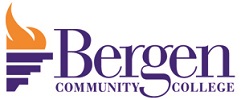Find your path to success with a diverse range of more than 120 degree, certificate, and continuing education programs.
Technical Standards
All candidates seeking a degree in BCC’s Diagnostic Medical Sonography program must possess the essential skills and abilities necessary to complete the curriculum successfully with or without reasonable accommodations for any disabilities the individual may have.
Throughout the course of the program, students will learn, practice, and verify numerous competencies (representing all three learning domains (cognitive, psychomotor, and affective) in a variety of settings including the classroom, the laboratory, and in the clinical environment. Each setting requires its own list of standards.
Required Classroom Standards
- Perceive and integrate information from a variety of sources including oral instruction, printed material, visual media, and live demonstration.
- Students must participate in classroom discussion, present oral reports, and successfully pass examinations which include the interpretation of sonographic images.
Completion of these tasks requires cognitive skills including reading, writing, and problem solving. To be physically capable of classroom work students must, with assistance, be able to see, hear, speak, sit, and touch.
Required Laboratory Standards
· Students must demonstrate fine psychomotor skills to manipulate sonographic transducers and ultrasound equipment.
· Students must demonstrate general professional behaviors such as team cooperation as well as the ability to communicate effectively with others.
· In addition to the physical capabilities necessary for classroom activities, laboratory sessions require a student, with assistance to reach in order to position and roll patients from side to side, if necessary.
· Fine motor skills are necessary to manipulate the ultrasound machine and transducer simultaneously, using both hands to perform procedures.
· Considerable strength is required for pushing/pulling an ultrasound machine into position or to patient rooms, turning and moving patients, pushing wheelchairs and stretchers, and performing cardiopulmonary resuscitation.
Clinical Education Standards
- Students must be able to obtain medical history from patients, parents or guardians.
- Students must be able to deliver, receive, and interpret verbal and non-verbal communication in English to and from the patient, physician, the clinical instructor, and student peers.
- Students must be able to recognize and react to signs of medical emergencies.
- Students must record medical history, interpret patient charts and sonographic procedure requests.
- Students must be able to distinguish audible sounds, visually monitor patients in dimmed lighting, and differentiate among the subtle shades of gray scale and color used during an ultrasound procedure.
- Students must maintain physical balance while performing examinations on patients of varying body habitus as well as meeting mental and physical demands of the different examination environments (ultrasound room, ICU, operating room, or emergency room.)
- Students must demonstrate sensitive responses to patients in the clinical environment and interact with physicians, peers, patients, clinical staff and faculty in an emotionally stable, professional, and ethical manner.
- Students must treat every patient with dignity and respect, regardless of race, religion, sex, age, ethnicity, or physical disability.
